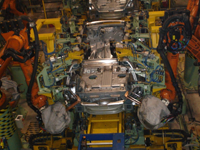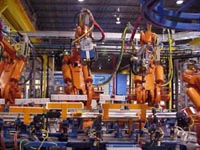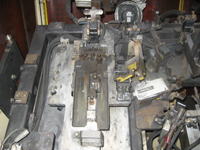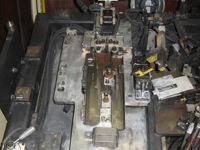The Welding Process: Description
Welding is a fabrication process that joins materials, usually metals or thermoplastics, by causing coalescence. This is often done by melting the workpieces and adding a filler material to form a pool of molten material (the weld puddle) that cools to become a strong joint, but sometimes pressure is used in conjunction with heat, or by itself, to produce the weld. This is in contrast with soldering and brazing, which involve melting a lower-melting-point material between the workpieces to form a bond between them, without melting the workpieces.
MIG Welding
Gas Metal Arc Welding (GMAW) is frequently referred to as MIG welding. MIG welding is a commonly used high deposition rate welding process. Wire is continuously fed from a spool. MIG welding is therefore referred to as a semiautomatic welding process.
GTAW Welding
Gas Tungsten Arc Welding (GTAW) is frequently referred to as TIG welding. TIG welding is a commonly used high quality welding process. TIG welding has become a popular choice of welding processes when high quality, precision welding is required.
Robotic Welding
There are two popular types of industrial welding robots. The two are articulating robots and rectilinear robots. Robotics control the movement of a rotating wrist in space.
Robotic welding systems are able to operate continuously, provided appropriate maintenance procedures are adhered to. Continuous production line interruptions can be minimized with proper robotic system design. Cold Jet's dry ice blast cleaning equipment is used to clean robotic welding stations in removal of weld spatter, slag, grease, and dirt.

Automotive Welding

Robotic welding on aluminium body assembly line

Welding Table Before Dry Ice Blasting

Welding Table After Dry Ice Blasting
